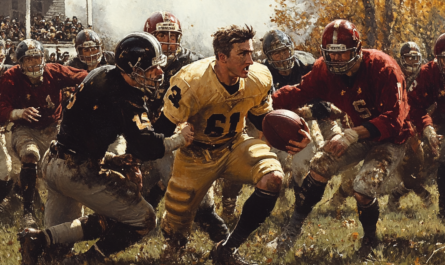Reporting history
Reporting as a genre of journalism originated in the 19th century, when newspapers and magazines began to actively develop. With the advent of photography and the telegraph, journalists were able to quickly transmit news from the scene, which significantly increased the demand for timely and reliable information. The first reports described events in real time, conveying the atmosphere and emotions felt by witnesses. For example, reporting on wars and major disasters allowed readers to learn about what was happening thousands of kilometers away.
With the development of technology and communications, reporting has gradually evolved. In the 20th century, radio and television made their own adjustments, allowing journalists not only to describe events, but also to show them live. The advent of television radically changed the perception of reporting, adding visual and auditory elements. Today, reporting remains one of the most popular genres of journalism, adapting to new media formats and platforms, including the Internet and social networks. Modern reporting often integrates text, photos, video and interactive elements to immerse the audience deeper into events.
Basic elements of a report
One of the key elements report is the accuracy and reliability of the information provided. A journalist is obliged to check all facts based on reliable sources in order to avoid the spread of false information. Emotional richness and detailed descriptions help the reader or viewer to immerse themselves in events, to feel their significance and scale. For example, using direct quotes from people involved in an event can add depth and realism to the story.
The balance between subjectivity and objectivity is also important. The report, as a rule, contains the personal observations and impressions of the journalist, which makes it more lively and emotionally rich. However, the author must strive for objectivity, avoiding bias and one-sided coverage of events. Using quotes and opinions from various participants in an event helps create a more complete and reliable picture. For example, presenting different points of view on a controversial issue helps the reader form their own opinion.
Genres and types of reporting
Reportage can be classified according to various criteria, including topic, format and style. For example, there are news reports, which focus on operational coverage of events, and analytical reports, where the focus is on the analysis and interpretation of what is happening. News reports are often published immediately after an event and are designed to quickly inform the audience. Analytical reports, on the other hand, can appear over time and offer in-depth analysis of events and their consequences.
Another important classification criterion is the format of material presentation. Text reporting, audio and video reporting require different approaches and skills. Video reporting, for example, incorporates visual elements to present events more vividly, while text reporting relies on skill with words and description. Audio reports use sounds and voices to create atmosphere and convey emotion. Each type of reporting has its own characteristics and requires certain skills and knowledge from the journalist. For example, video reporting requires editing and camera skills, while text reporting depends on the ability to write vividly and vividly.
Preparing to create a report
Before starting to create a report, a journalist needs to conduct thorough preparation. This includes researching the topic, gathering information about the event or subject of reporting, and contacting key participants or witnesses. Research and analysis of various sources helps to create a more complete and objective picture of the subject of the report. For example, examining archival materials and previous publications can provide important context and background.
An important stage of preparation is planning the structure of the future material. The journalist must identify in advance the main questions that need to be answered in the report and develop a plan of action. This helps to organize work and avoid omissions, and also allows you to use time and resources more efficiently. For example, if a report is about a major event, the journalist might prepare a list of people to interview in advance and plan visits to key locations. This allows you to more effectively collect information and create rich and informative material.
Methods of collecting information
Gathering information for reporting, as for example for interview, may include various methods such as interviews, observation, analysis of documents and materials. Interviewing key participants in an event allows you to obtain unique insights and personal opinions, which makes the reporting more lively and informative. For example, interviews with eyewitnesses to an accident can provide valuable details that were not mentioned in official reports. Observing what is happening at the scene of the event helps the journalist to form his own idea of the situation and convey the atmosphere of the event. Being on the scene often allows you to see nuances that cannot be captured remotely.
Analysis of documents, statistics and other materials also plays an important role in creating a report. This helps check facts, find additional details and context for reporting events. It is important to use various sources of information to create the most complete and reliable picture of what is happening. For example, studying official reports, news archives, and independent research can provide greater insight into a topic. Using data and numbers allows you to back up your reporting with facts, making it more compelling.
Writing techniques and structure of the report text
Reporting is a genre of journalism that requires careful preparation and a careful approach to writing text. It is important not only to collect reliable information, but also to present it competently to the reader in order to create vivid and exciting material. In this section we will look at key writing techniques and structure of the report text.
- Introduction and Hook Start with a strong introduction that will grab the reader’s attention. This could be a dramatic description of a scene, an interesting quote, or a fact that immediately dives into the essence of the event. The introduction should be succinct and intriguing so that the reader wants to continue reading.
- Chronological Structure Tell events in the order they occur to create a logical and understandable narrative arc. Chronological order helps the reader follow the development of events and better understand their sequence and relationships.
- Using dialogues Include dialogues and quotes from participants in the events to give it life and authenticity. Quotes allow you to convey the voices of real people, their emotions and opinions, which makes the report more authentic and lively.
- Detail and description Pay attention to details that will help the reader visualize what is happening and feel the atmosphere of the event. Descriptions of places, sounds, smells and other sensory details make the report more voluminous and realistic. It is important to convey not only the facts, but also the feelings of what is happening.
- Closing and Conclusions Conclude the report with a strong conclusion, summarizing the findings and perhaps offering reflections for the future. This helps end the story on a high note and leaves the reader with something to think about. The conclusion should be succinct and meaningful, emphasizing the main conclusions and significance of the event.
These techniques will help you create an engaging and informative report that will interest the reader and provide a complete picture of the event. Proper use of these techniques allows you to make the text lively, emotionally rich and easy to understand.
Questions and answers
Answer 1: Reporting as a genre of journalism originated in the 19th century.
Answer 2: Accuracy and reliability of information, as well as a balance between subjectivity and objectivity.
Answer 3: News, analytical, documentary, text, audio and video reports.
Answer 4: Studying the topic, collecting information, making contacts, planning the structure of the material.
Answer 5: Interview, observation, analysis of documents and materials.



